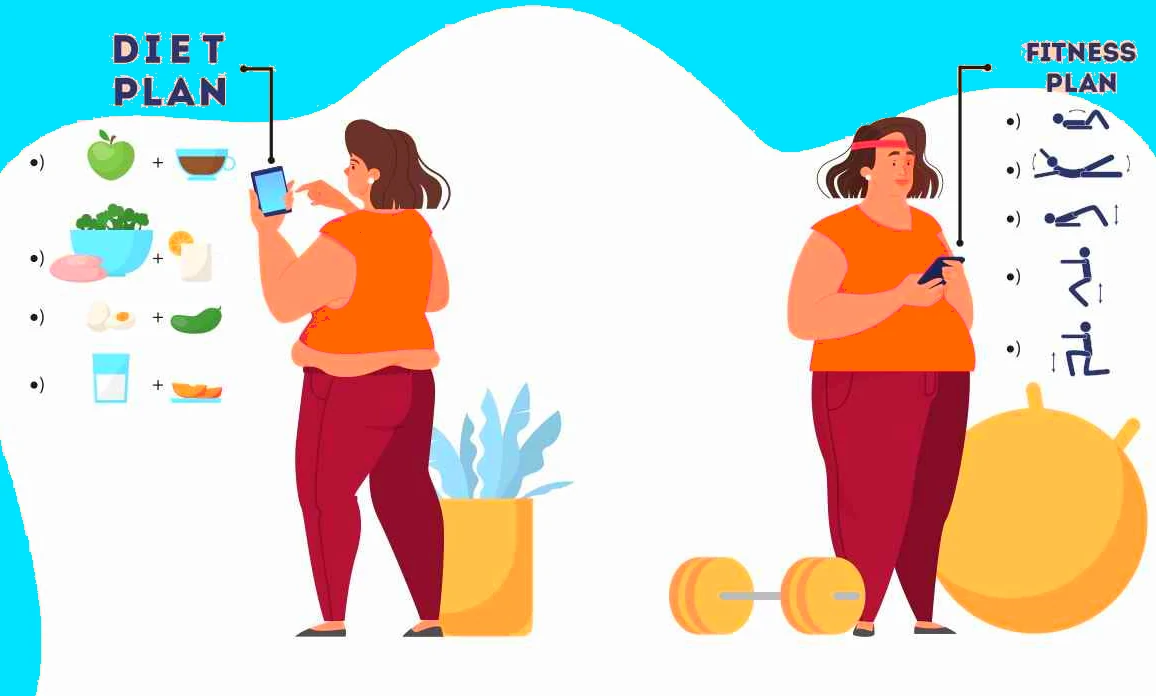Meal prepping for weight loss involves planning and preparing meals in advance to help you adhere to a calorie-controlled eating plan while ensuring you’re consuming nutritious foods that support your weight loss goals.
Losing weight involves creating a calorie deficit, where you consume fewer calories than you burn through daily activities and exercise.

Here’s a guide to help you meal prep effectively for weight loss:
1. Set Your Calorie Goal:
- Calculate your daily calorie needs based on your age, gender, weight, height, and activity level.
- Aim for a calorie deficit to promote weight loss. A safe and sustainable rate of weight loss is typically 0.5 to 1 pound per week, which requires a calorie deficit of 500 to 1000 calories per day.
2. Plan Your Meals:
- Design a meal plan that includes a balance of lean protein, complex carbohydrates, healthy fats, and plenty of vegetables.
- Choose nutrient-dense foods that are lower in calories but high in fiber and protein to help keep you feeling full and satisfied.
- Aim for smaller, frequent meals throughout the day to help control hunger and prevent overeating.
3. Choose Healthy Ingredients:
- Opt for lean protein sources such as chicken breast, turkey, fish, tofu, tempeh, and legumes.
- Incorporate complex carbohydrates like quinoa, brown rice, sweet potatoes, whole grain bread, and oats.
- Include plenty of non-starchy vegetables such as leafy greens, broccoli, cauliflower, bell peppers, carrots, and cucumbers.
- Use healthy fats sparingly, such as olive oil, avocado, nuts, and seeds.
4. Portion Control:
- Use portion control techniques to manage calorie intake. Invest in portion control containers or use measuring cups and kitchen scales to ensure accurate serving sizes.
- Aim to fill half your plate with non-starchy vegetables, one-quarter with lean protein, and one-quarter with complex carbohydrates.
5. Cook in Bulk:
- Choose a day of the week to dedicate to meal prep.
- Cook large batches of protein, grains, and vegetables that can be easily portioned out into meals for the week.
- Store prepared ingredients in portioned containers for easy grab-and-go options.
6. Include Snacks:
- Prepare healthy snacks such as cut-up fruits and vegetables, Greek yogurt, nuts, seeds, and hummus with veggie sticks to have on hand when hunger strikes between meals.
7. Stay Hydrated:
- Drink plenty of water throughout the day to stay hydrated and help control hunger. Sometimes thirst can be mistaken for hunger.
8. Monitor Progress and Adjust as Needed:
- Keep track of your food intake and monitor your progress towards your weight loss goals.
- Be flexible and willing to adjust your meal plan and portion sizes based on your results and feedback from your body.
How to Meal Prep for Muscle Gain : Important tips
By following these steps and staying consistent with your meal prep and healthy eating habits, you can support your weight loss efforts and develop sustainable dietary practices for long-term success. Remember to focus on overall health and well-being rather than just the number on the scale.




